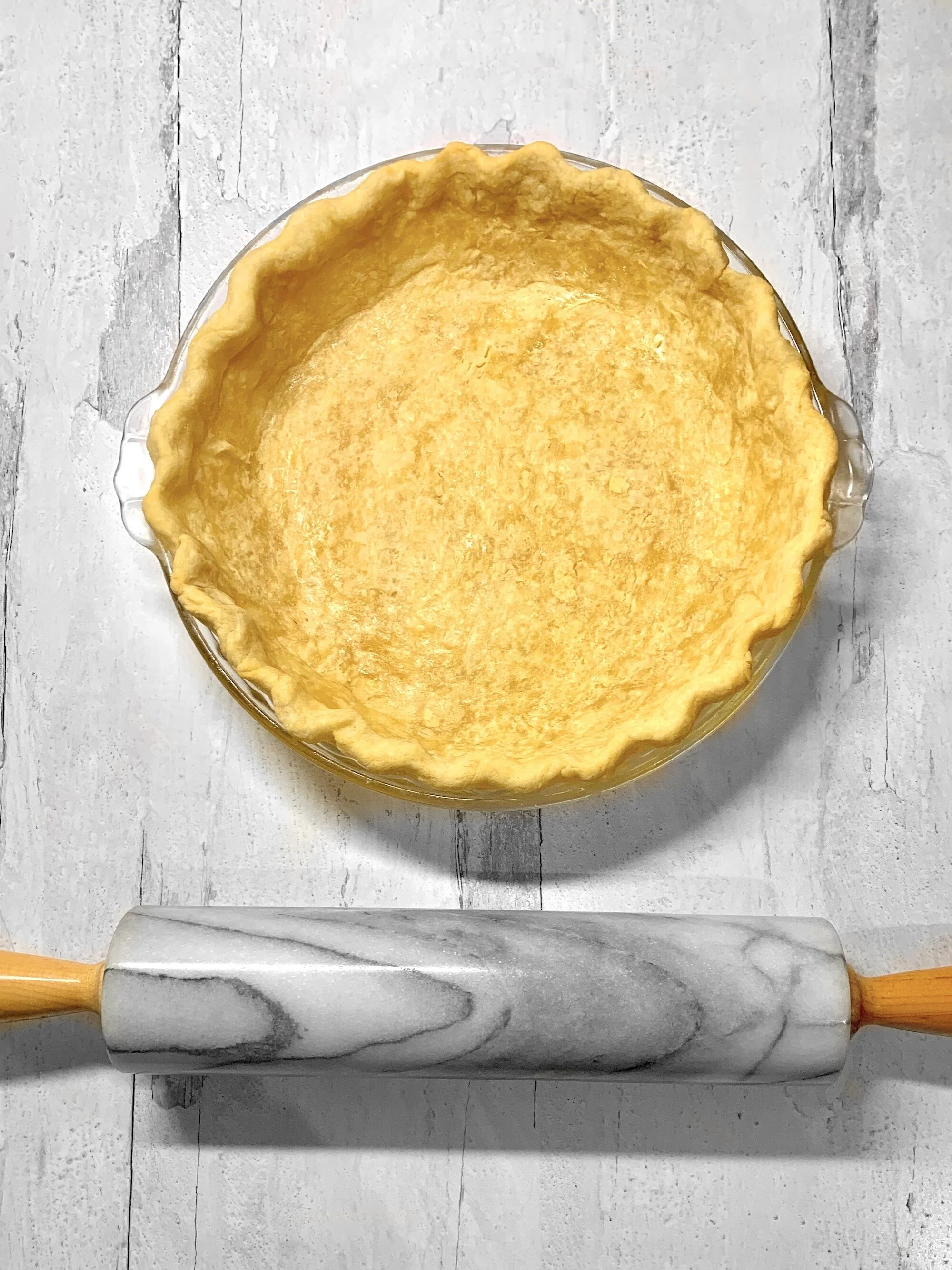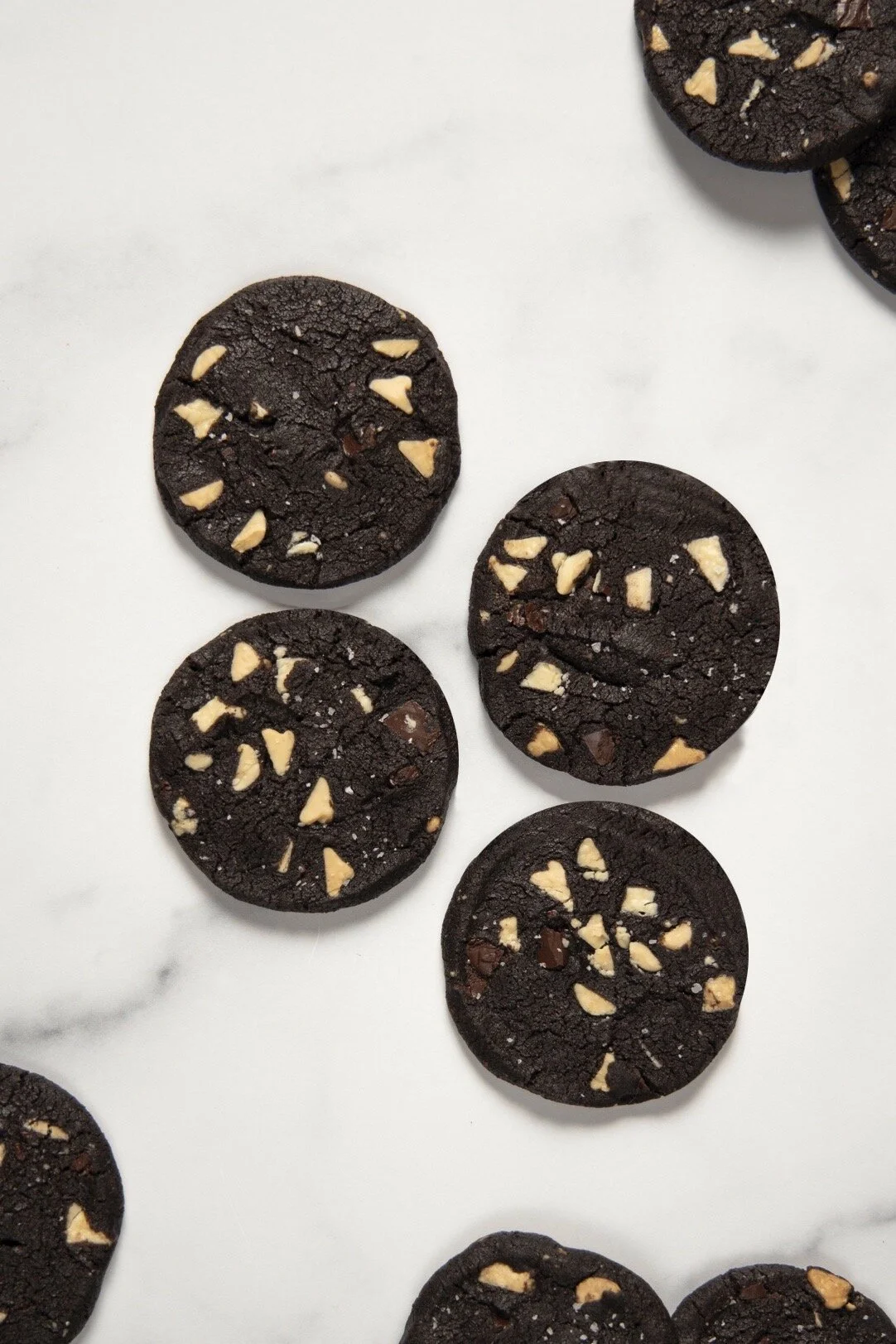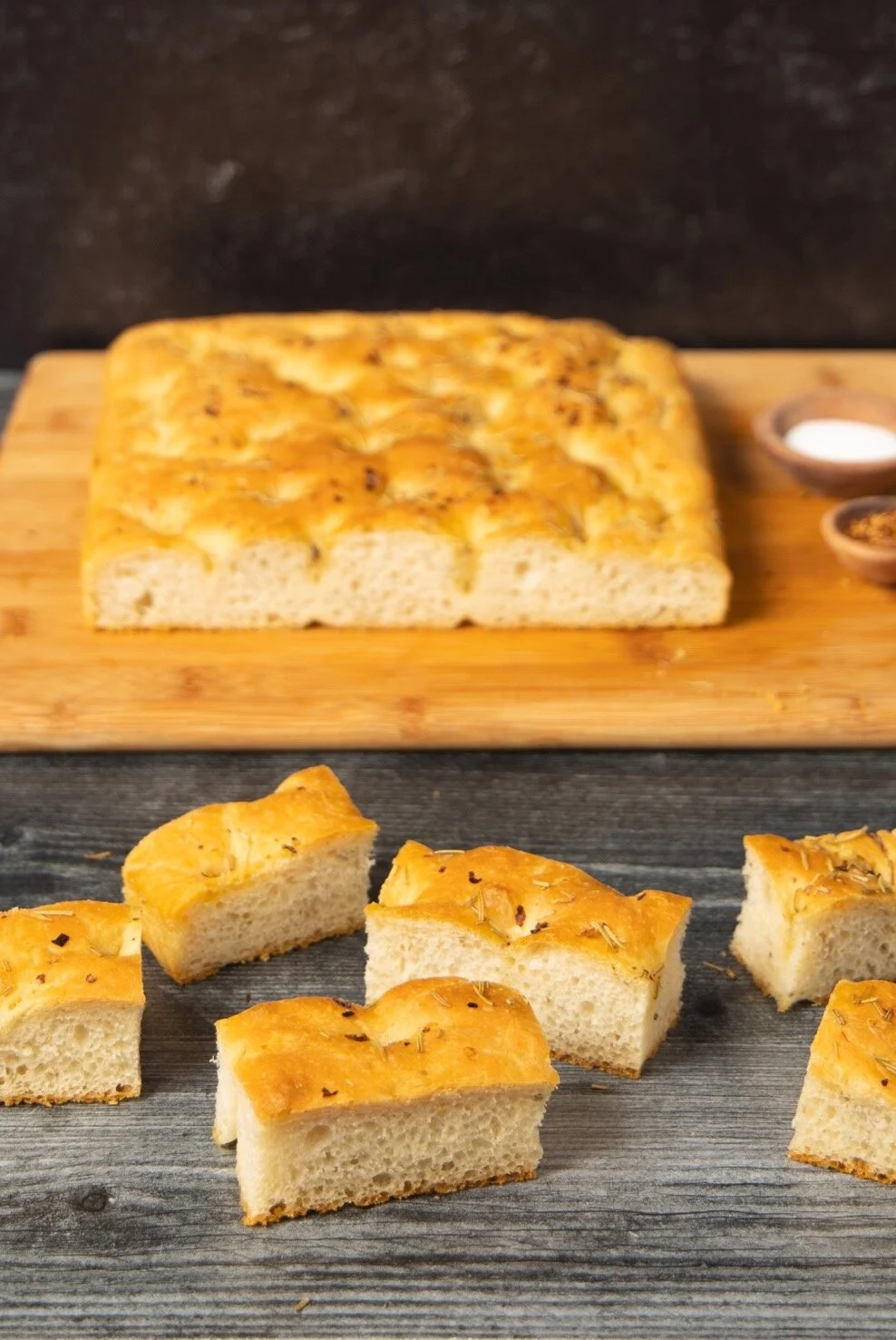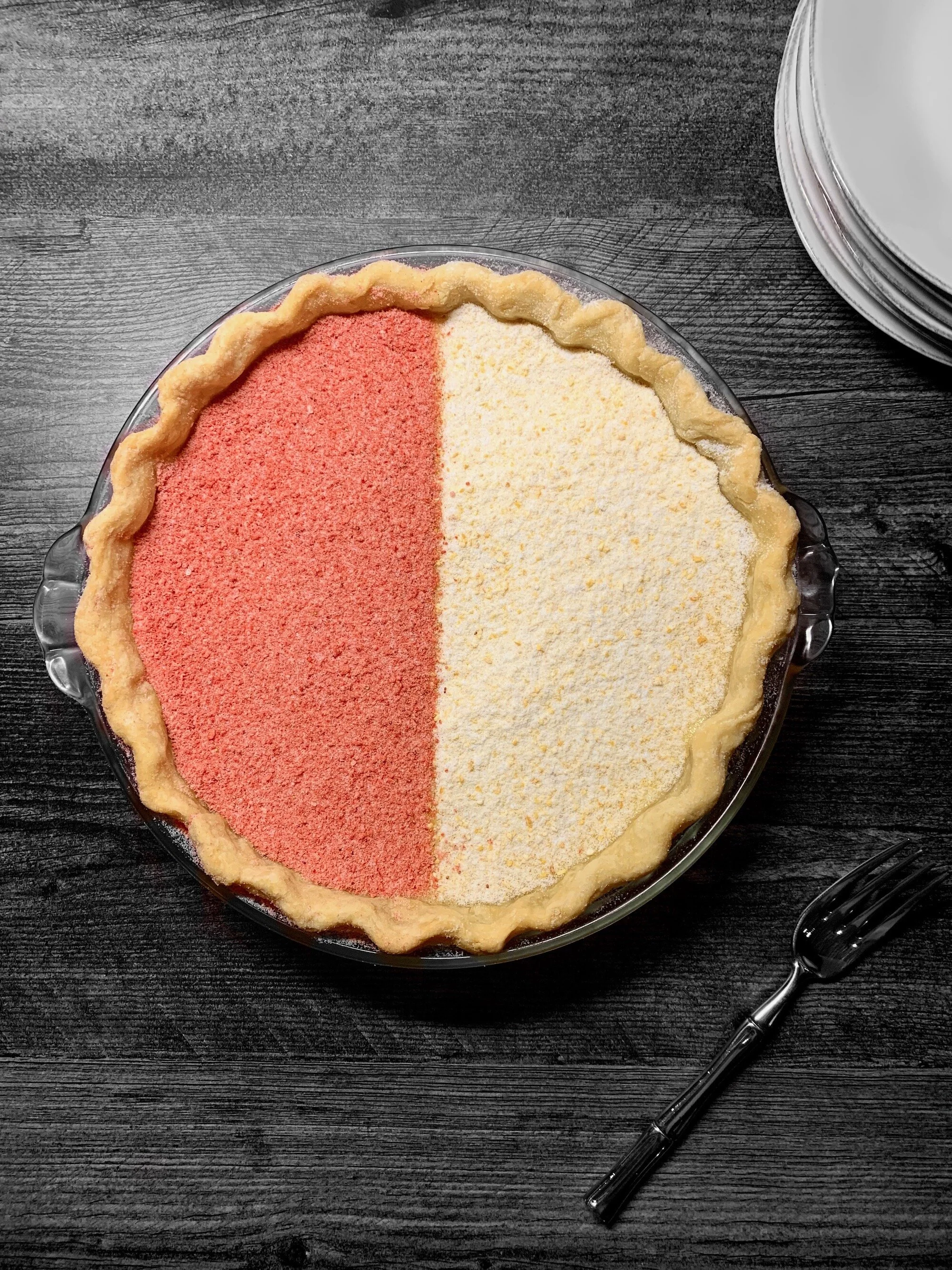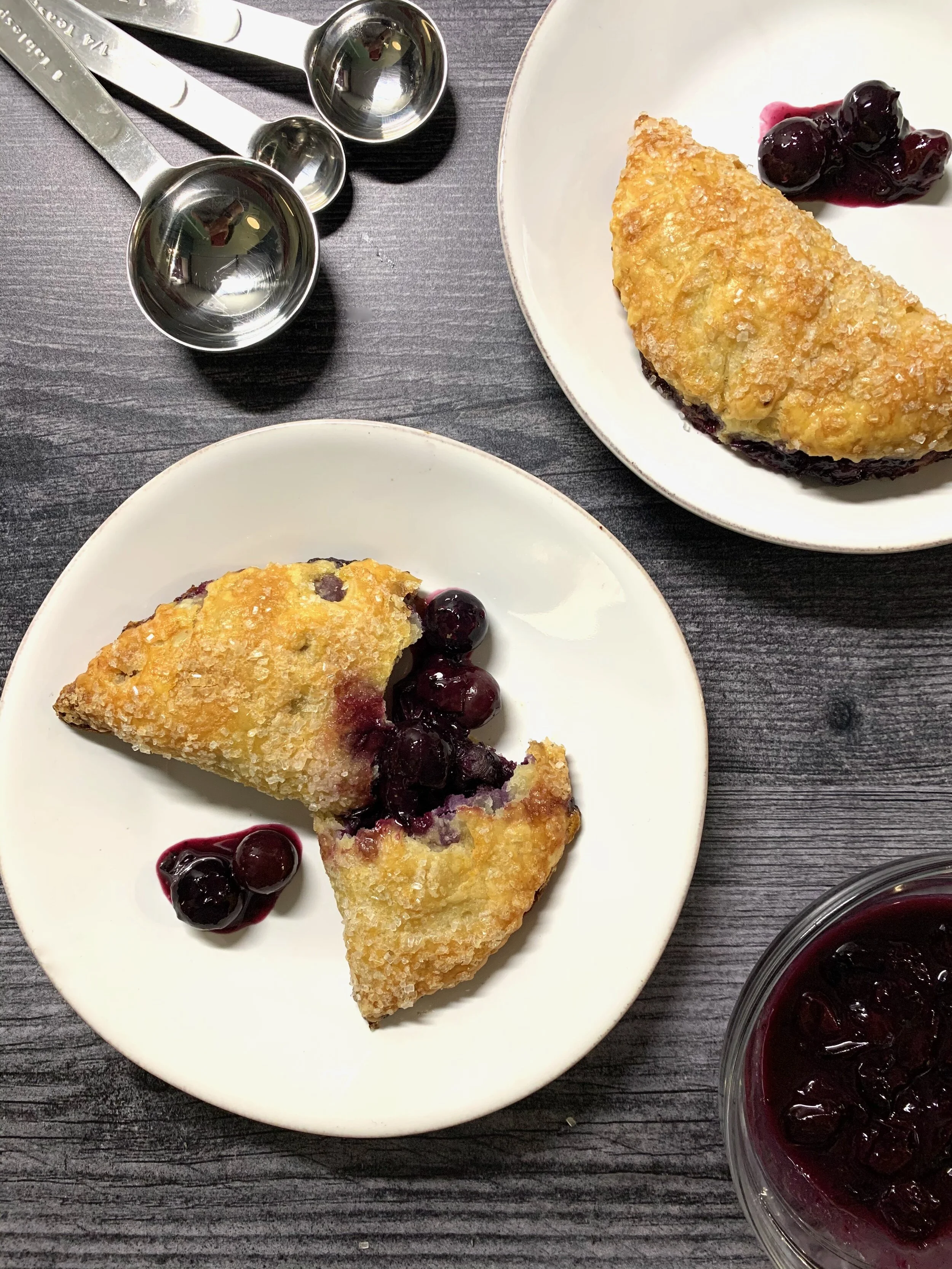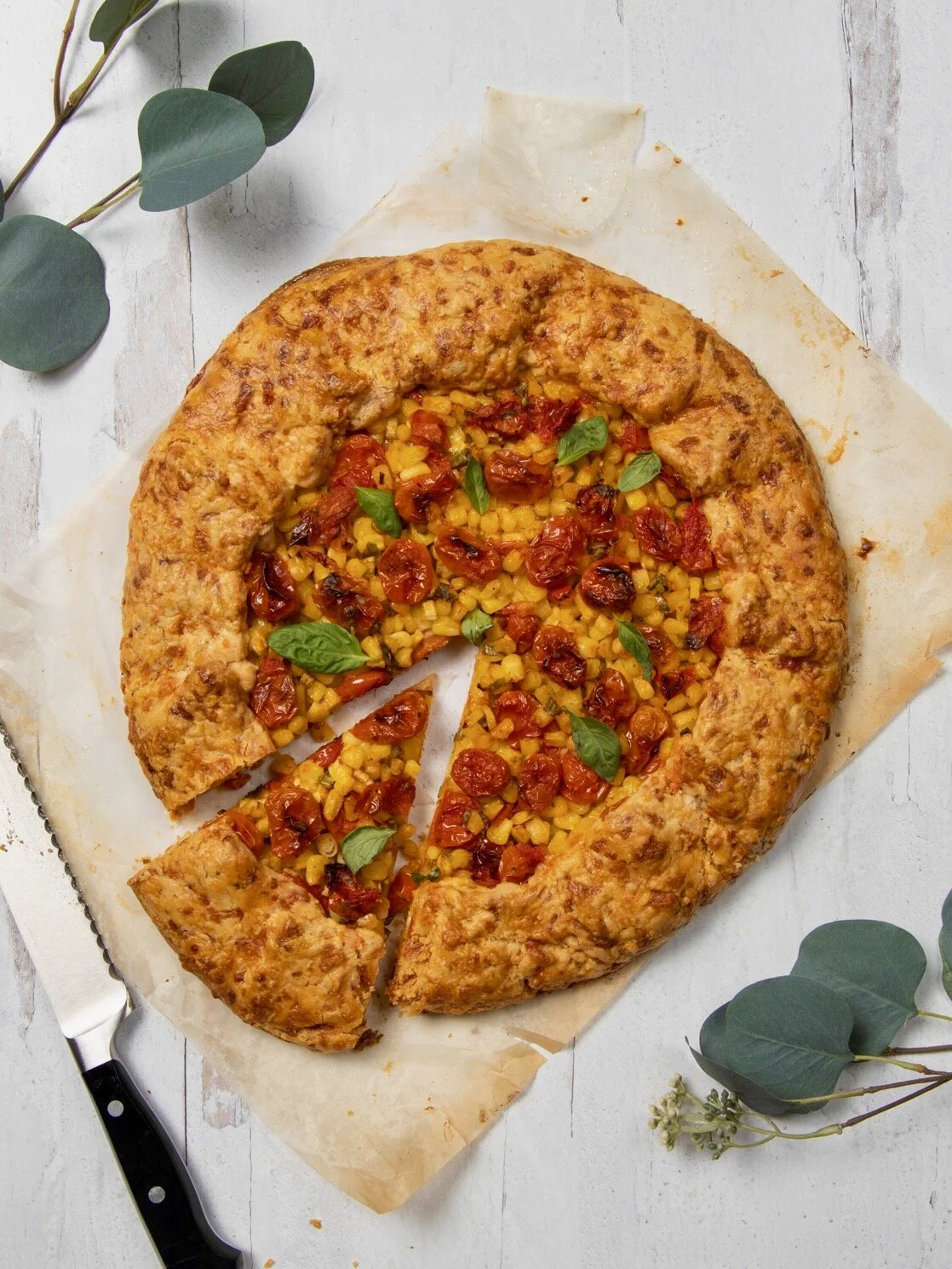Single Pie Crust Dough
Crispy, buttery, and flaky. That’s all I really want in a pie crust. And boy have I experimented with different recipes for pie crusts. After a lot of testing, I can tell you that flaky-crust-success is less about the ingredient list – as pie crust recipes are all pretty similar – and more about technique: butter temperature & handling, the right water to flour ratio, and baking at the right oven temperature. I’ve written out my favorite combination of ingredients along with some tips for getting it right. I use this pie crust recipe regularly now. It can be seen in action in the photos below and in my Sweet Potato, Caramelized Onion, and Feta Galette, Tomato Gouda Galette, and Vanilla Custard Pie recipes.
I suggest a pastry cutter or two knives to break up your cold butter because warm hands can melt the butter. You really want distinguishable pieces of butter in the dough. You might notice that this recipe call for more flour and butter than some other recipes. That’s because I like a substantial crust edge on my pies and I’ve found that many recipes don’t always give me enough dough to achieve that. For the fats, I use mostly butter for the best flavor and a little vegetable shortening for additional flakiness. The baking powder is a trick I learned in baking school that helps the edges get nice and poofy.
Buttery, flaky, poofy, pie crust. This was the pumpkin pie I served for Thanksgiving November 2020. I always use Libby’s Pumpkin recipe for the filling. Easy and delicious. (Photo by Daniel Marks)
This pie crust makes an appearance in my Sweet Potato and Caramelized Onion Galette.
Pie Crust Recipe:
Yield:
One 9-inch pie crust
Difficulty:
Easy
Special equipment:
Pastry cutter
(I earn a tiny commission from cooking products sold through my site.)
Ingredients:
260 grams All Purpose Flour
¼ tsp baking powder
¼ tsp table salt
45 grams vegetable shortening, cold, cut into 4 pieces
9 TBSP (127 grams / 1 stick + 1 TBSP) unsalted butter, cold, cubed
4-6 TBSP ice water*
*I keep a measuring cup with water and some ice cubes in it near by, and measure out the water as I need it.
Instructions:
Whisk together flour, salt and baking powder in a large mixing bowl.
Add vegetable shortening to the flour mixture. Toss and stir with a fork to break up the pieces and coat the flour with the shortening. It will start to look a little mealy.
Next, add the butter and toss lightly with your hands or a fork to coat the butter pieces with the flour. Using a pastry cutter or your fingertips, quickly work the butter into the flour until butter pieces between nickel and pea sized. The pieces don’t all need to be the same size. Break up larger pieces with your fingers as needed.
Sprinkle 4 TBS of ice water over the dough and toss with a fork until you’ve formed a crumbly dough. Adding more, 1 TBSP at a time as needed. If you squeeze the dough into a ball and it stays together, stop adding water. You still want to see pieces of butter and shortening. There should not be any dry flour.
The dough should look shaggy but stick together when you squeeze it.
Turn out the dough onto a pieces of plastic wrap. Kneed for 10-20 seconds to catch any crumbs and pat into a disk about 5 inches wide, tightly wrap and refrigerate for at least 30 minutes. Don’t skip this step. The dough needs the time to relax and for the flour to absorb the liquid.
Use within 24 hours or tightly wrap foil over the plastic wrap and freeze up to 2 months.
Roll out and bake according to your recipe.
This is the pre-baked version of the blind-baked crust at the top of the post.


